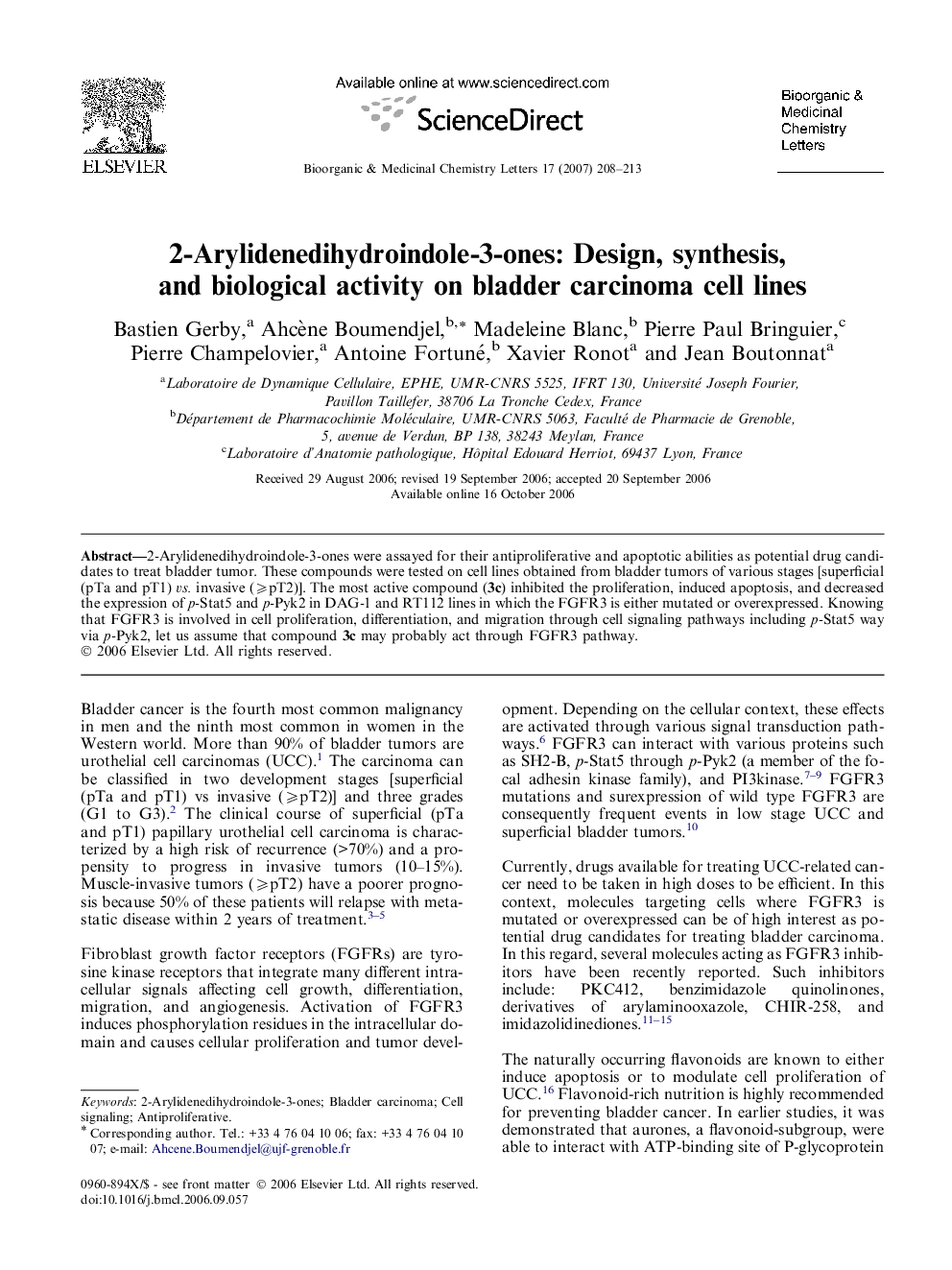| کد مقاله | کد نشریه | سال انتشار | مقاله انگلیسی | نسخه تمام متن |
|---|---|---|---|---|
| 1367093 | 981615 | 2007 | 6 صفحه PDF | دانلود رایگان |

2-Arylidenedihydroindole-3-ones were assayed for their antiproliferative and apoptotic abilities as potential drug candidates to treat bladder tumor. These compounds were tested on cell lines obtained from bladder tumors of various stages [superficial (pTa and pT1) vs. invasive (⩾pT2)]. The most active compound (3c) inhibited the proliferation, induced apoptosis, and decreased the expression of p-Stat5 and p-Pyk2 in DAG-1 and RT112 lines in which the FGFR3 is either mutated or overexpressed. Knowing that FGFR3 is involved in cell proliferation, differentiation, and migration through cell signaling pathways including p-Stat5 way via p-Pyk2, let us assume that compound 3c may probably act through FGFR3 pathway.
Figure optionsDownload as PowerPoint slide
Journal: Bioorganic & Medicinal Chemistry Letters - Volume 17, Issue 1, 1 January 2007, Pages 208–213